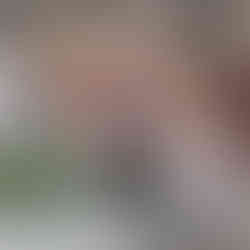What does "Australian Made" mean and is it actually Australian made?
- artifexaustralia

- May 28, 2021
- 4 min read
“In order to qualify as Australian made, a product must have undergone its last substantial transformation in Australia. According to the Australian Consumer Law: Goods are substantially transformed in a country if: as a result of one or more processes undertaken in that country, the goods are fundamentally different in identity, nature or essential character from all of their ingredients or components that were imported into that country”

This definition is taken from the Australian Made Campaign (AMC) who represent the Australian Governing Body and according to Artifex Managing Director, Michael D'Andrea, "it doesn’t sit well with me, it needs to be discussed further".
Let’s take this task chair* for example, it is sold as an ‘Australian Made’ product, but with our experience in importing, sourcing and manufacturing, we understand that the only components likely to be Australian made, are the seat and back foams. Consequently, this means the castors, base, column, mechanism, arms, plastics, and most probably the seat base and plastics too, are all imported items.
* The ‘Australian Made’ task chair marketed by the Australian Made Campaign.
Found on the AMC Compliance Note for Office Chairs.
The Australian Made Campaign is satisfied that this is enough to warrant calling it ‘Australian Made’, but is this really enough? Is Australian made foam and having the chair assembled here really a ‘substantial transformation’? Would you also be offended that this task chair is called Australian made if you were competing in a similar market? When talking about what is required to qualify goods as Australian Made, the AMC explains “The analogy of a cake is often used where you may import the ingredients but mix and bake the cake within Australia, that cake is then considered Australian Made”. So, getting back to the task chair in question, if the castors are an ingredient of the cake, the base is an ingredient of the cake, the arms, the mechanism and so forth, majority the components are imported but then ‘baked’ or assembled here like a cake and covered in a tasty fondant or foam, it is then put on a shelf to be sold as ‘Australian Made’. "I would like to argue, that this is not Australian made, its merely Australian assembled", says Michael. More so, when you bake a cake, the “baking” is further processing the ingredients therefore substantially transforming the product, which is irreversible. This task chair has not been “baked”, all components can be pulled apart and interchanged.

As manufactures of genuine Australian Made furniture we believe ‘Australian Made’ should ideally refer to products manufactured here using at least 80% raw Australian materials and components which are made in Australia, or in the very least, revert to old content rules for international free trade agreements which required a minimum 50% Australian components. The imported content, whichever percentage, should only be imported if no one manufactures it here in Australia. This will make the term authentic and the campaign trustworthy. It would support Australian businesses who work hard to fit in with Australian regulations as well as providing jobs to our citizens.
We consider Artifex Australia, to be 95% Australian made. The only imported components we use for our furniture are those that no one makes here in Australia, such as staples, webbing, and springs. Major furniture components such as foam, timber and plywood are all Australian made goods sourced directly from local suppliers.

We do have two products which were designed in Sweden and all the components are imported from Sweden and Germany. These components are assembled and upholstered here and then sold to the Australian market as ‘Designer Recliners’. They are the only 2 products of ours that we consider not to be ‘Australian Made’, they are simply assembled and upholstered in Australia. But according to the Australian law, perhaps we should start calling these Australian made as well? They have been significantly changed here at our factory, more so than the task chair in question.
Customers should not be deceived when buying an Australian made product, thinking it’s made in Australia, when it’s not, when the majority of the labour and components contributing to the final product are provided through the International market.
How can an Australian made product with 80%+ Australian made components compete with an Australian made product with 20% or less Australian made components? The consumer wonders why one is so much cheaper than the other and the authenticity has been lost.
Has the ‘Australian made’ definition from the Australian Made Campaign been seriously considered and debated, or is it an oversight that we have settled for? Maybe more than one definition ought to be provided to the consumer? It could be:
‘Australian Assembled’ for products simply assembled here with 80% or more of componentry imported,
‘Australian Made and owned’ for the products genuinely made in Australian using minimum 80% local componentry and labour,
and ‘Made in Australia but Foreign owned’ for products produced in Australia and owned by a foreign company.
Perhaps a percentage of Australian made materials used within the product should be stated like we see on food labels, to give the customer a true representation for each product.
We want to help educate the customer, make it clear which products are made in Australia using Australian components and which are simply assembled here using majority imported components. This will support and benefit the consumer, the manufacturer, and the Australian economy immensely. We want to wear the term, ‘Australian Made’ with pride, and feel it is a support of our local industries.
Next time you see an Australian made logo, or anything that claims to be Australian made, ask question and double check to see where it is actually made and where the components come from!












Comments